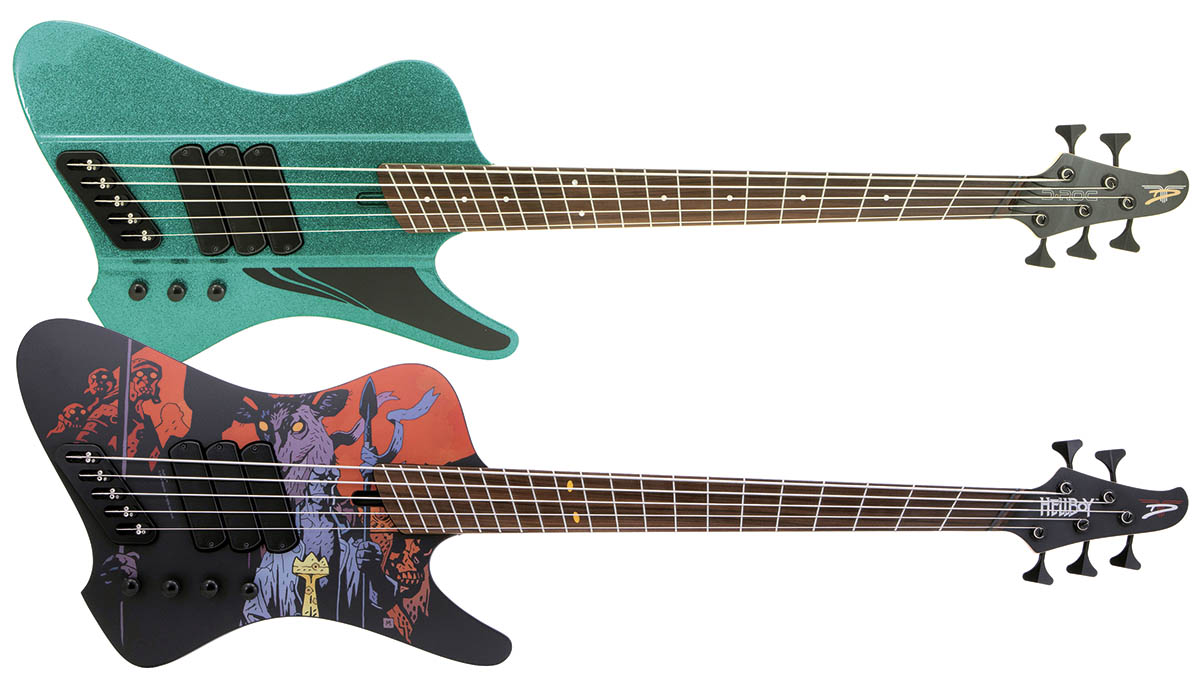Guitar World Verdict
The Hellboy is a tone machine on steroids, as long as you like distorted sounds, while the D Roc Standard 5 is a top-class performer at a top-class price.
Pros
- +
Eye-catching looks.
- +
Superb tonal performances.
Cons
- -
The Standard's passive operation may limit its appeal.
- -
The Hellboy theme might not work for everyone.
You can trust Guitar World
Take a long look: these are two beautiful bass guitars, carrying with them all the attention to detail and design ethos that you would expect of a Dingwall instrument.
The Aquaflake model is a looker by any reckoning, and then we have the Hellboy Limited Edition – a bass, it is claimed, that comes straight from hell. It comes fitted with a Darkglass distortion circuit, so there’s no need for pedals, effect modeling, or bass amp tinkering – the Hellboy can be made to rip and tear into any band mix with the turn of a control.
Build Quality
Both instruments follow the D-Roc body template, with a sizable cutaway to allow extended access to the upper-range frets. To facilitate the Hellboy graphic on the body-facing, the standard raised central portion of the body, as seen on the Standard model, has been replaced with a smoother integration that doesn’t interfere with the graphic.
Both basses have been built using khaya, an African mahogany, and five-piece maple necks with pau ferro fingerboards are attached using four-bolt joints. The neck pockets on both instruments feel tight and solidly connected.

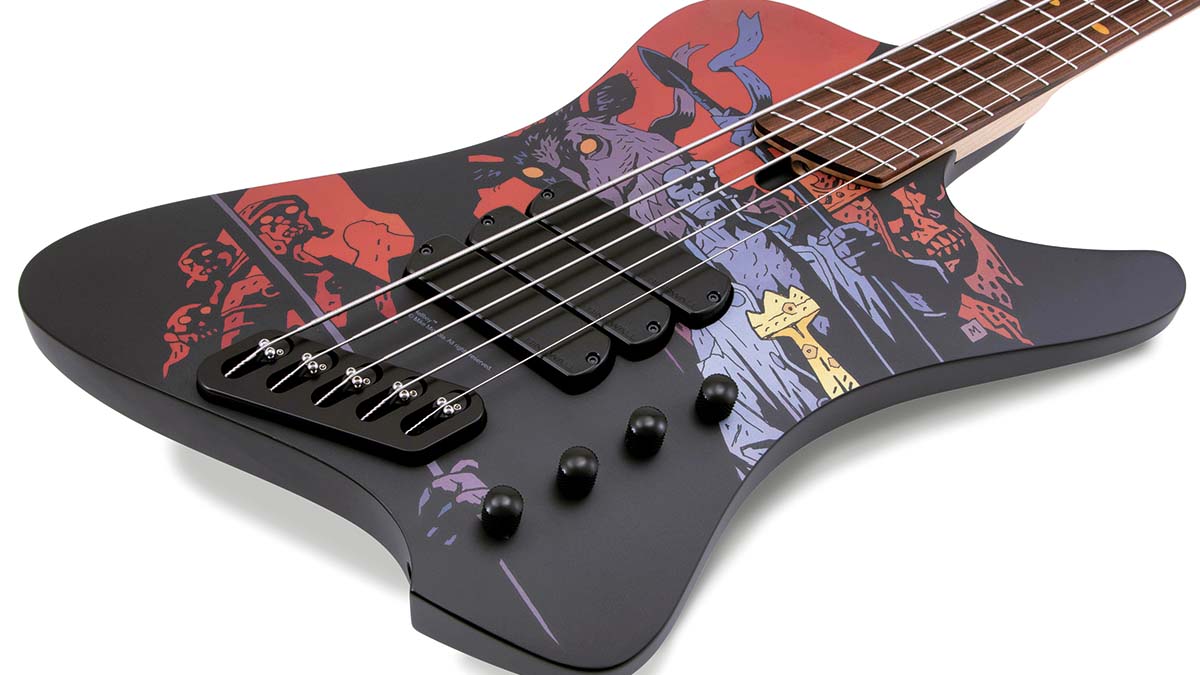
As Dingwall fans will already know, both basses feature multi-scale lengths, ranging from 34 to 37 inches across the five strings, with the much-discussed fanned fret system providing a more natural fretting angle for the player’s benefit.
Both basses incorporate three FD3N Dingwall pickups: the Standard model uses neodymium magnets whereas the Hellboy incorporates alnico equivalents.
Dingwall bridges have been used, with both basses fitted with Hipshot Ultralite machineheads to reduce the weight and improve the balance. Both basses weigh in around the 10-pound mark, but thankfully the weight distribution has been sensibly addressed. The slimness of the body helps to make the excess weight manageable.
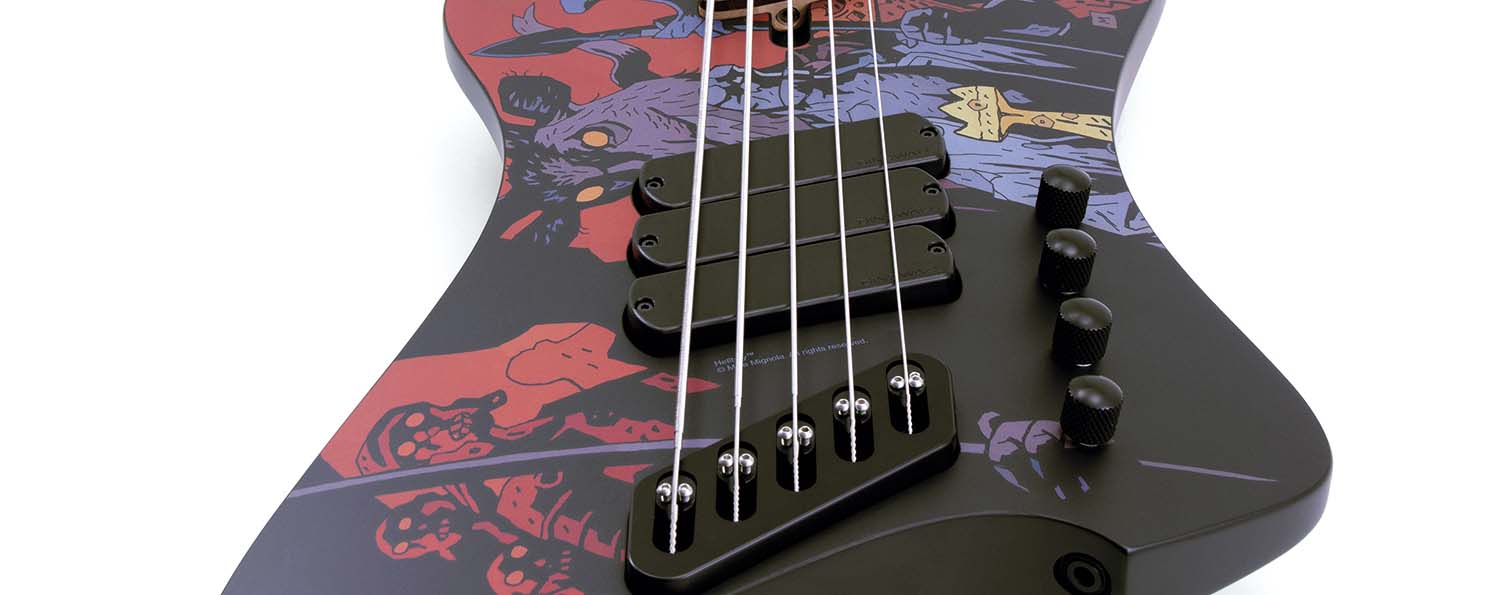
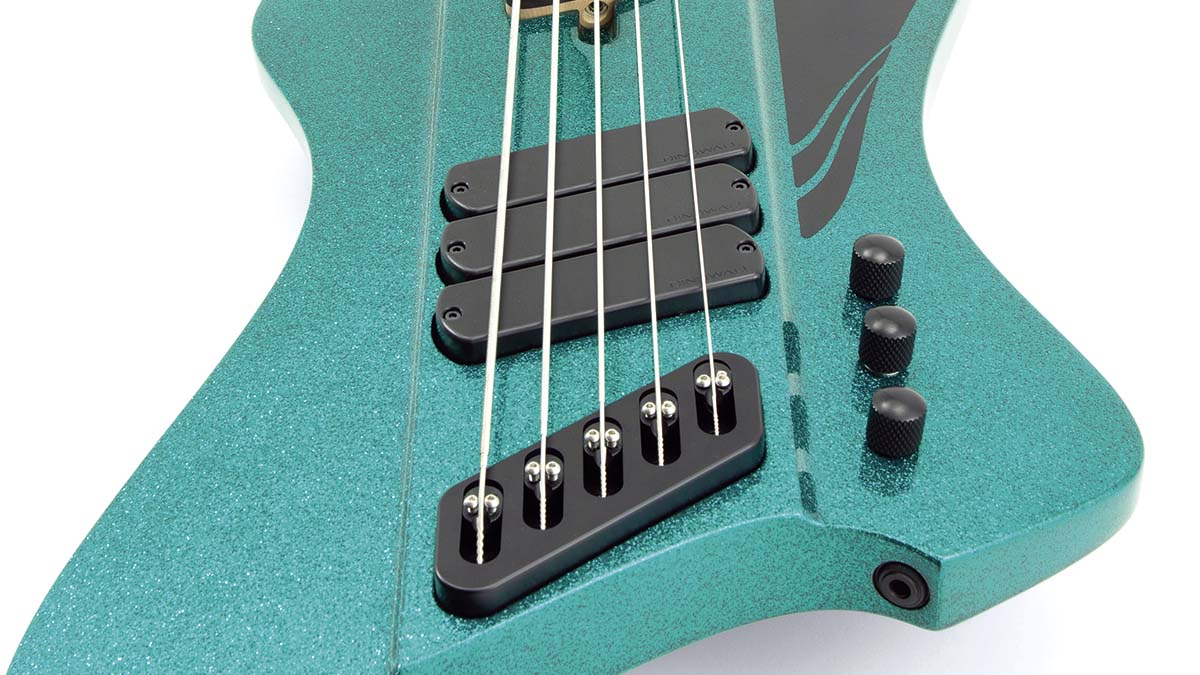
The Standard D-Roc is a passive instrument, with volume and tone controls and a four-way rotary pickup selector. This offers four distinct voicings, depending on the coils you choose and whether parallel/series mode is selected.
The Hellboy follows the same layout, but with an extra push/pull facility on the volume pot and an extra distortion level control. With the volume control up, the bass remains passive and the Darkglass circuitry is inactive, but push the volume control down and the full might of the drive circuit is unleashed.
At this point, the active circuitry is in operation, powered by a nine-volt battery underneath the magnetic plate on the rear of the body. The amount of distortion added to your signal is controlled from the drive control – the options are extensive, based on your tone and pickup choices.
Sounds and Playability
Both basses exhibit a big, warm unplugged tone – and digging into the strings highlights the effect of the pau ferro fingerboard on the overall sound. The tone of each string, and indeed each note, sounds punchy with a high degree of attack as the note is played. Put simply, the notes you play will stand out: of the two, the Hellboy sounds as though it offers a little more depth.
Tonally speaking, the Hellboy is a very different proposition. Played with a pick or fingerstyle, the bass is a tonal heavyweight, and opening the tone control up reveals a gnarly bite
Plugging in, the Standard 5 is an impressive beast: even selecting one pickup setting and panning across the tone control reveals a distinct amount of tonal light and shade. Throw different playing styles into the mix and then apply the pickup combinations, and you won’t be short on tonal options and flexibility.
Tonally speaking, the Hellboy is a very different proposition. Played with a pick or fingerstyle, the bass is a tonal heavyweight, and opening the tone control up reveals a gnarly bite, even in passive mode, across all five strings. It should be noted that the low B performance on both basses is exemplary, thanks to the extra scale length.
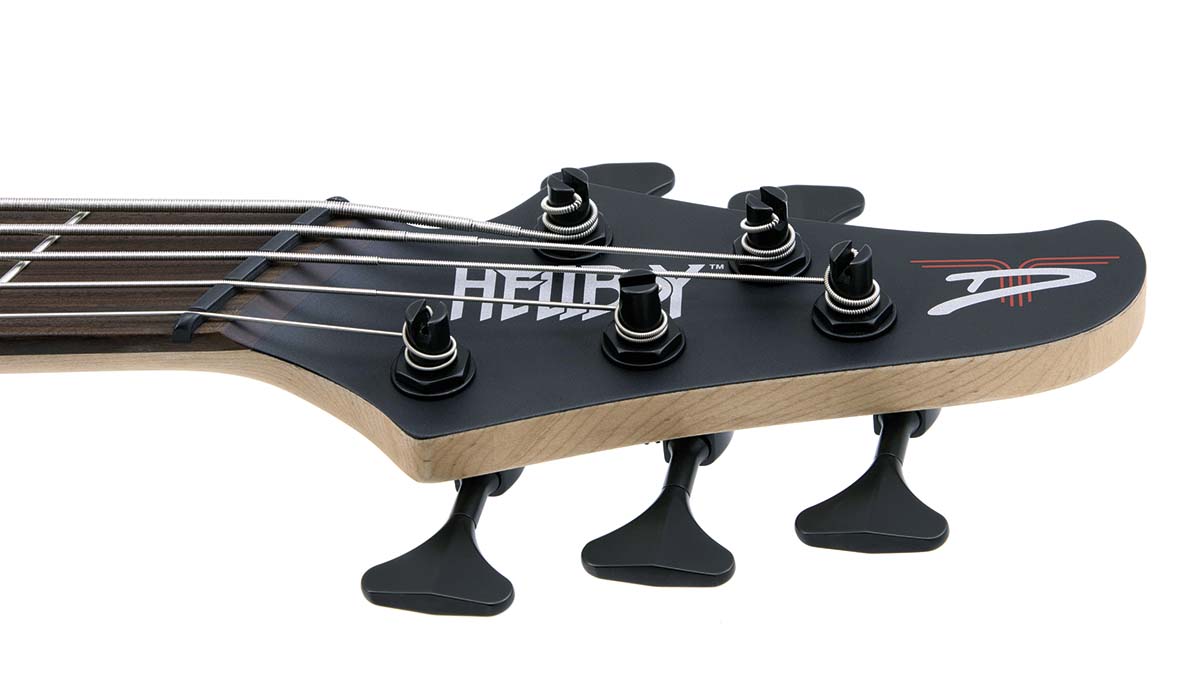
Kicking the Darkglass circuit into play adds a whole other tonal dimension. I suggest you secure the crockery, because this circuit may well shake the foundations. In basic terms, it’s brutal. If distorted bass tones are your thing, you may just have found sonic nirvana in this instrument.
Although the fingerstyle tones are impressive, the real bite comes from playing with a pick. The level of definition can be tailored with the tone control, although I found the pickup selector to be my preferred option when changing sound, as I didn’t want to move away from the sweet spot that I’d found with the tone control.
The medium-thin C-shaped neck profile on either bass is super-comfortable – and although both basses are fives, their 18mm string spacing makes for a rewarding playing experience.
Conclusion
Both of these basses will blow your mind. I’m even more impressed with the D-Roc than I was four years ago, when it was launched in its previous guise as the D-Bird. The Standard model is a fine, fine bass and at this price point, it offers excellent value for money.
The Hellboy is an exciting prospect – and even without the fantasy-fiction connections, the inclusion of the Darkglass circuit is a masterstroke. Sure, the price reflects this addition, but the tones it offers are jawdropping. Try both basses at your earliest opportunity.
Specs: D-Roc Standard 5
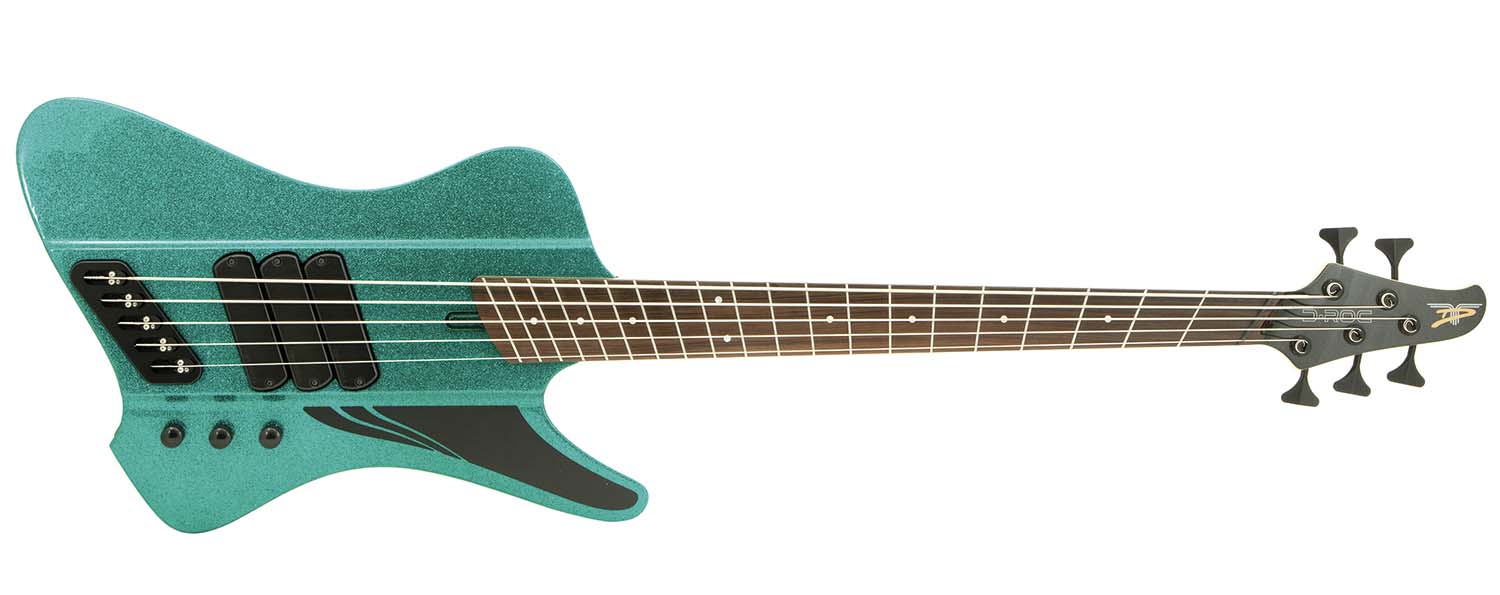
- PRICE: $2440
- MADE IN: South Korea
- BODY: Khaya (African mahogany)
- NECK: Five-piece maple, 34”-37” scale, satin finish
- NECK JOIN: Bolt-on, four-bolt attachment
- FINGERBOARD: Pau ferro, 20 frets
- PICKUPS: Dingwall FD3N pickups x 3, with neodymium magnets
- ELECTRONICS: Passive
- CONTROLS: Volume, four-way rotary pickup selector, tone
- HARDWARE: Dingwall bridge, Hipshot licensed Ultralite machine heads
- WEIGHT: 9.7 lbs
- LEFT-HAND AVAILABLE? No
- CASE/GIG-BAG SUPPLIED? Deluxe padded gigbag
Specs: Hellboy
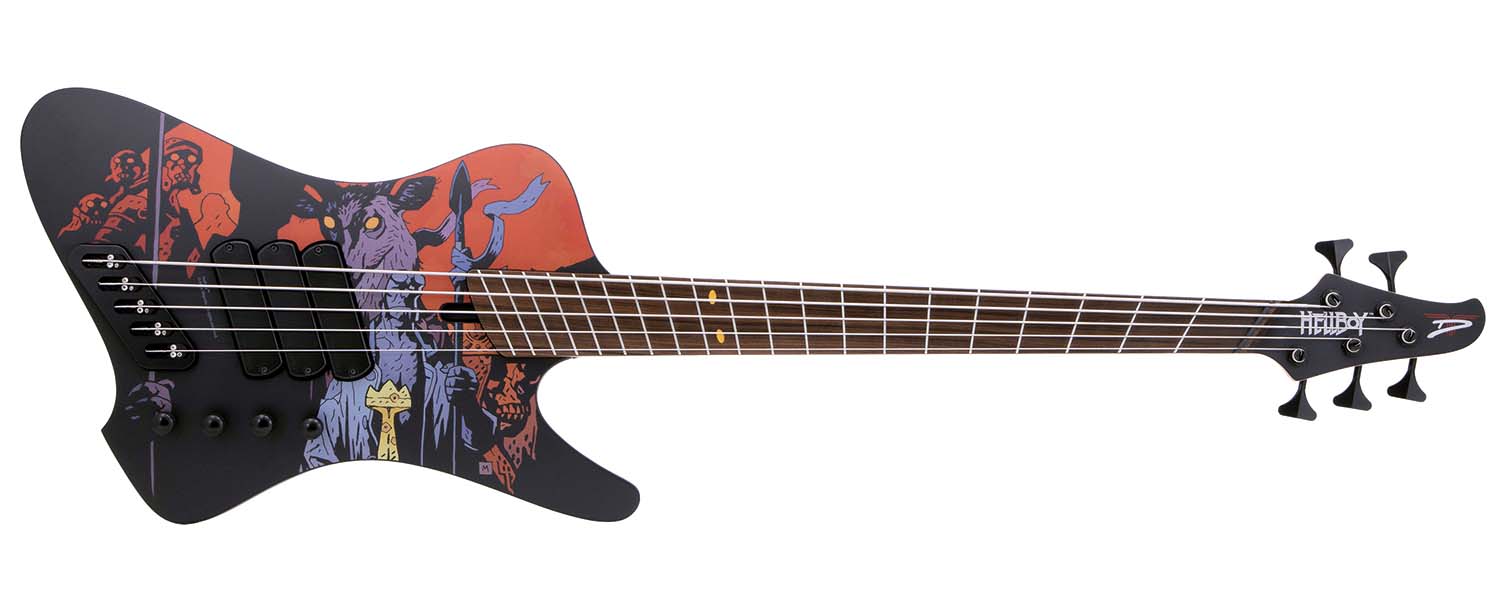
- PRICE: $3400
- MADE IN: South Korea
- BODY: Khaya (African mahogany)
- NECK: Five-piece maple, 34”-37” scale, satin finish
- NECK JOIN: Bolt-on, four-bolt attachment
- FINGERBOARD: Pau ferro, 20 frets
- PICKUPS: Dingwall FD3N pickups x 3, with alnico magnets
- ELECTRONICS: Darkglass distortion drive circuit, 9-volt
- CONTROLS: Volume (push/pull to activate the circuit), four-way rotary pickup selector, Darkglass drive, active-only tone
- HARDWARE: Smoked nickel hardware, Dingwall bridge, Hipshot licensed Ultralite machine heads
- WEIGHT: 10.14 lbs
- LEFT-HAND AVAILABLE? No
- CASE/GIG-BAG SUPPLIED? Deluxe padded gigbag
- CONTACT: Dingwall Guitars
“Affordable versions of the three best basses I've ever held in my hands”: Sterling by Music Man completes its trilogy of Joe Dart signature models with a trio of made-to-order basses that cost less than $500
“The ace up the sleeve of bass players around the globe since 1978”: Tobias instruments were trailblazers in the bass world. Now they’re back as part of the Gibson family
